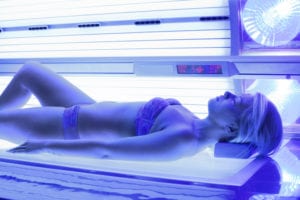We Cannot Forget the Ugly Truths About Tanning
- Posted on: Aug 15 2020
 We’re at that time of year when folks generally like to get out and play in the sunshine. This year, that may be more pronounced than ever with the closing and reopening that have occurred in recent months. As we venture into the outdoors, we must remember not to fall for ideas about tanning that can get us into trouble. Here, we outline the common myths that still exist about tanning and the ugly truths that live beneath them.
We’re at that time of year when folks generally like to get out and play in the sunshine. This year, that may be more pronounced than ever with the closing and reopening that have occurred in recent months. As we venture into the outdoors, we must remember not to fall for ideas about tanning that can get us into trouble. Here, we outline the common myths that still exist about tanning and the ugly truths that live beneath them.
Myth: “I look better with tanned skin.”
Ugly Truth: We understand that this kind of statement is subjective, so we cannot call it a myth so much as a misguided belief. The idea that tanning is a necessity is where people go wrong. Tanning increases the risk of skin cancer by 55%, according to studies. Exposure to UV rays also causes cosmetic concerns that won’t appear for years. So, while tanned skin may look and feel good in the moment, think of the skin’s appearance after UV light has caused collagen breakdown, sunspots, and a dry, leathery appearance that cannot be corrected.
Myth: I am too young to get skin cancer regardless of my habits.
Ugly Truth: The American Cancer Society (ACS) has named melanoma the leading cause of cancer deaths in women aged 25 to 30. Skin cancer has also been named the third most common form of cancer in young people aged 15 to 39. These are significant statistics that all youth and young adults need to know.
Myth: My base tan will protect me.
Ugly Truth: A base tan is a tan. Therefore, it is an indication of sun damage. The body produces increased amounts of melanin when cells in the dermis are damaged by UV light. This does not decrease after melanin has darkened the skin. The risk of skin cancer and premature aging still exist and may increase based on the cumulative effects of UV exposure after that base tan is achieved.
Myth: A tanning bed is a safer alternative to sun exposure.
Ugly Truth: Tanning lamps also use UV light to achieve a golden tan, so there is no protection. In fact, scientists estimate the risks to be even higher for tanning bed users. The risk of developing melanoma increases by 20% after one tanning session. The risk of developing squamous cell carcinoma increases by 67% after just one session. There is no safe tanning with UV light.
The American Society for Mohs Surgery is committed to the professional development of board-certified dermatologists and the care of those who have been diagnosed with skin cancer. If you would like to find a Mohs surgeon in your area, check our directory here.
Posted in: Skin Cancer, Skin Care


